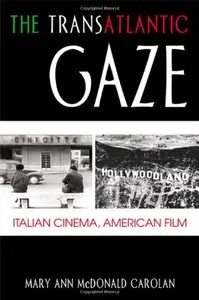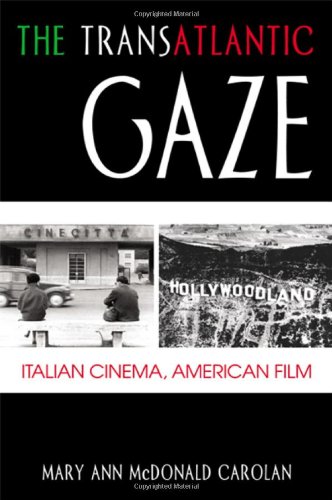The Transatlantic Gaze: Italian Cinema, American Film (Suny Series in Italian/American Culture) by Mary Ann McDonald Carolan
English | 2014 | ISBN: 1438450257, 1438450249 | 190 pages | PDF | 6,4 MB
English | 2014 | ISBN: 1438450257, 1438450249 | 190 pages | PDF | 6,4 MB
Tracks the influence of Italian cinema on American film from the postwar period to the present.
In The Transatlantic Gaze, Mary Ann McDonald Carolan documents the sustained and profound artistic impact of Italian directors, actors, and screenwriters on American film. Working across a variety of genres, including neorealism, comedy, the Western, and the art film, Carolan explores how and why American directors from Woody Allen to Quentin Tarantino have adapted certain Italian trademark techniques and motifs. Allen’s To Rome with Love (2012), for example, is an homage to the genius of Italian filmmakers, and to Federico Fellini in particular, whose Lo sceicco bianco/The White Sheik (1952) also resonates with Allen’s The Purple Rose of Cairo (1985) as well as with Neil LaBute’s Nurse Betty (2000). Tarantino’s Kill Bill saga (2003, 2004) plays off elements of Sergio Leone’s spaghetti Western C’era una volta il West/Once Upon a Time in the West (1968), a transatlantic conversation about the Western that continues in Tarantino’s Oscar-winning Django Unchained (2012). Lee Daniels’s Precious (2009) and Spike Lee’s Miracle at St. Anna (2008), meanwhile, demonstrate that the neorealism of Roberto Rossellini and Vittorio De Sica, which arose from the political and economic exigencies of postwar Italy, is an effective vehicle for critiquing social issues such as poverty and racism in a contemporary American context. The book concludes with an examination of American remakes of popular Italian films, a comparison that offers insight into the similarities and differences between the two cultures and the transformations in genre, both subtle and obvious, that underlie this form of cross-cultural exchange.
“…insightful … In detailed readings and comparisons, and thanks in part to the well-chosen quotations that she meticulously analyzes, Carolan is masterful in acknowledging the tremendous impact that the Italian filmmakers have had on their American counterparts.” — CHOICE
“…Carolan has written an astutely focused text on a universally acknowledged subject, but one that is rarely covered these days, even in academia … this book is an excellent reference for scholars and could provide movie buffs or Italophiles with a wealth of film trivia.” — San Francisco Book Review
Note: My nickname - interes



